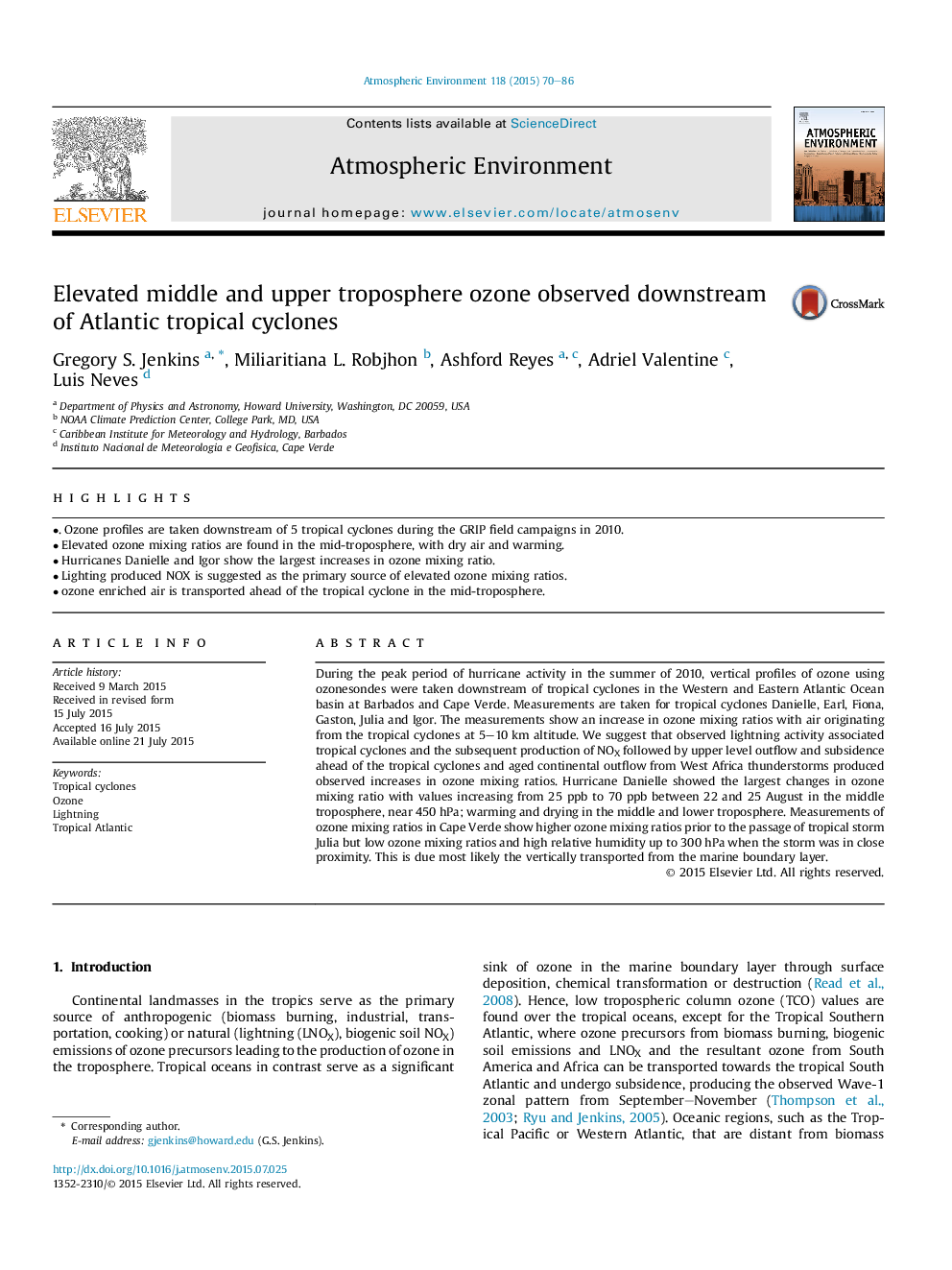| Article ID | Journal | Published Year | Pages | File Type |
|---|---|---|---|---|
| 6337568 | Atmospheric Environment | 2015 | 17 Pages |
Abstract
During the peak period of hurricane activity in the summer of 2010, vertical profiles of ozone using ozonesondes were taken downstream of tropical cyclones in the Western and Eastern Atlantic Ocean basin at Barbados and Cape Verde. Measurements are taken for tropical cyclones Danielle, Earl, Fiona, Gaston, Julia and Igor. The measurements show an increase in ozone mixing ratios with air originating from the tropical cyclones at 5-10Â km altitude. We suggest that observed lightning activity associated tropical cyclones and the subsequent production of NOX followed by upper level outflow and subsidence ahead of the tropical cyclones and aged continental outflow from West Africa thunderstorms produced observed increases in ozone mixing ratios. Hurricane Danielle showed the largest changes in ozone mixing ratio with values increasing from 25Â ppb to 70Â ppb between 22 and 25 August in the middle troposphere, near 450Â hPa; warming and drying in the middle and lower troposphere. Measurements of ozone mixing ratios in Cape Verde show higher ozone mixing ratios prior to the passage of tropical storm Julia but low ozone mixing ratios and high relative humidity up to 300Â hPa when the storm was in close proximity. This is due most likely the vertically transported from the marine boundary layer.
Related Topics
Physical Sciences and Engineering
Earth and Planetary Sciences
Atmospheric Science
Authors
Gregory S. Jenkins, Miliaritiana L. Robjhon, Ashford Reyes, Adriel Valentine, Luis Neves,
